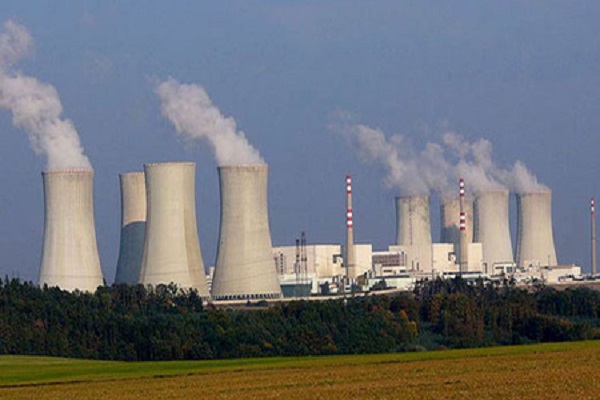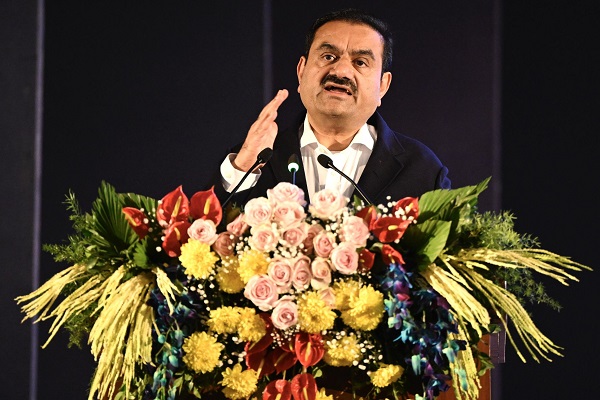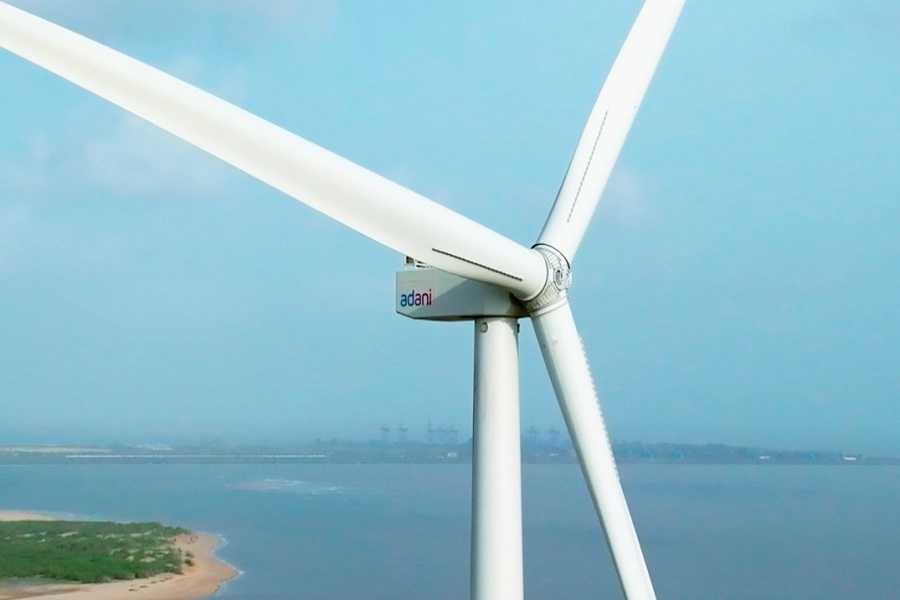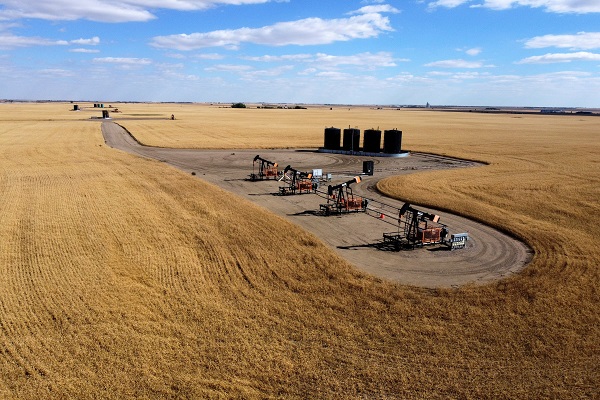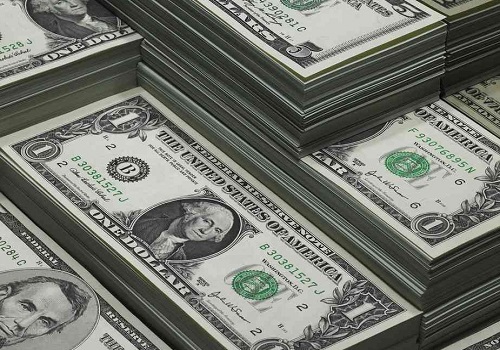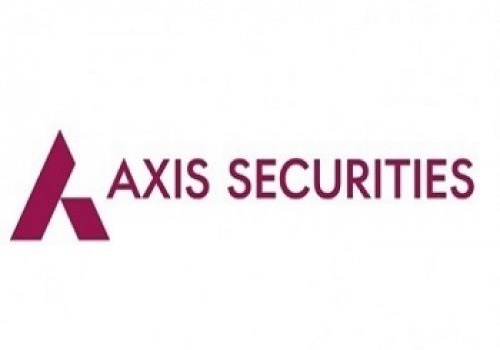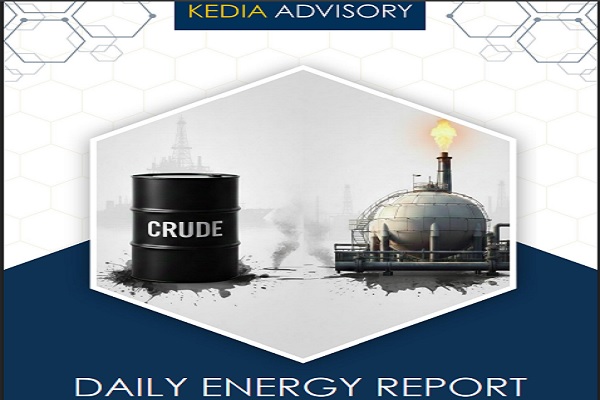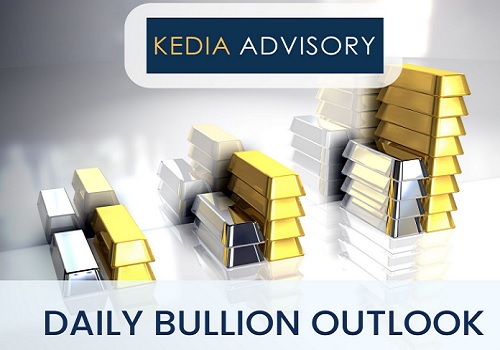Cottoncandy trading range for the day is 51700-55840 - Kedia Advisory

Gold
Gold prices witnessed a sharp decline of 2.5%, settling at Rs.92,339, pressured by easing global trade tensions and a strengthening U.S. dollar. Safe-haven demand weakened as President Donald Trump signaled potential trade deals with India, South Korea, and Japan, while also rolling back some auto tariffs. These developments diminished gold’s appeal as a geopolitical hedge, contributing to selling pressure. Domestically, Indian gold markets saw the steepest discount in nearly nine years, with dealers offering up to $80 per ounce below official prices as record-high rates discouraged retail buying. Weak festive demand ahead of Akshaya Tritiya also contributed, with jewellers reporting limited advance orders. In contrast, Chinese markets saw a surge in premiums, with dealers charging $44–$50 above spot prices—up sharply from the prior week—indicating strong demand and increased shipments. Globally, gold demand rose modestly by 1% year-on-year to 1,206 metric tons in Q1 2025, driven by a 170% jump in investment flows, notably into gold ETFs, and a 14% increase in gold bar purchases. However, overall jewellery demand slumped by 21% to 380.3 tons—the lowest since the 2020 pandemic—amid persistently high prices. Central banks also slowed their buying, with purchases falling 21% to 243.7 tons. Technically, the gold market is under long liquidation, as open interest fell by 10.08% to 14,840, reflecting bearish sentiment. Immediate support lies at Rs.90,830, with further downside possible to Rs.89,320. Resistance is seen at Rs.95,075; a breakout could push prices toward Rs.97,810.
Trading Ideas:
* Gold trading range for the day is 89320-97810.
* Gold fell as easing trade tensions between the U.S. and its trading partners dented safe-haven appeal.
* President Donald Trump said he has "potential" trade deals with India, South Korea and Japan.
* Global gold demand rose by 1% year-on-year to 1,206 metric tons in the first quarter of 2025 as investment jumped 170% - WGC
Silver
Silver prices declined by 1.24% to settle at Rs.94,729, as easing global trade tensions reduced demand for safe-haven assets. Market sentiment shifted after U.S. President Donald Trump indicated progress on potential trade deals with India, Japan, and South Korea, and expressed optimism about a broader agreement with China. Meanwhile, silver’s industrial demand outlook faced pressure amid disappointing macroeconomic data. The U.S. economy contracted unexpectedly by 0.3% in Q1—the first such decline in three years—while China’s NBS manufacturing PMI hit a 16-month low, reflecting plunging export orders. Despite near-term pressure, silver's long-term fundamentals remain robust. The market is forecast to witness its fifth consecutive annual deficit in 2025, driven by industrial demand projected to hit a record high above 700 million ounces, fueled by applications in the green economy. Global demand is expected to stabilize at 1.2 billion ounces, as gains in industrial usage and physical investment will offset weaker demand for jewelry and silverware. India is expected to lead the decline in jewelry consumption due to persistently high domestic prices. Investment demand for silver bars and coins is forecast to rebound by 7% in 2025, following a 22% slump last year, particularly in the U.S., where profit-taking and political shifts influenced investor behavior. Technically, the market is under fresh selling pressure, with open interest increasing by 2.07% to 16,464. Immediate support is seen at Rs.93,500, below which prices may test Rs.92,275. Resistance is expected at Rs.95,725, and a move above could push prices toward Rs.96,725.
Trading Ideas:
* Silver trading range for the day is 92275-96725.
* Silver fell as easing global trade tensions dampened demand for safe-haven assets.
* Sentiment shifted after US President Donald Trump voiced optimism about a deal with China.
* Silver’s industrial demand outlook came under pressure amid weaker economic data from major economies.
Crude oil
Crude oil prices edged higher by 0.4% to settle at Rs.4,972, supported by geopolitical tensions and mixed market fundamentals. The rise followed President Trump's renewed threat of secondary sanctions on countries importing Iranian oil, intensifying pressure on global supply chains. The U.S. has already imposed sanctions on several Chinese refineries and entities linked to Iranian crude trade. Additionally, China's signal of willingness to resume trade talks with the U.S. has improved sentiment, raising hopes for reduced friction between the two largest oil consumers. On the supply front, U.S. crude oil production increased slightly in February to 13.16 million barrels per day, with Texas and New Mexico reversing recent output declines. Meanwhile, the EIA reported a larger-than-expected drop in U.S. crude inventories by 2.696 million barrels, compared to market expectations of a 0.39 million barrel build. Gasoline stocks fell significantly by 4 million barrels, while distillate fuel inventories rose modestly by 0.937 million barrels. Despite the inventory drawdown, the International Energy Agency (IEA) flagged a potential global supply surplus of 600,000 barrels per day in 2025, which could widen if OPEC+ fails to manage its production cuts. The IEA also lowered its demand growth forecast for 2025 by 70,000 bpd to 1 million bpd. Technically, crude oil is under short covering as open interest declined by 1.15% to 18,991. Support is at Rs.4,857, with further downside potential to Rs.4,742, while resistance is seen at Rs.5,052 and could extend to Rs.5,132 if breached.
Trading Ideas:
* Crudeoil trading range for the day is 4742-5132.
* Crude oil gained following President Trump's threat of secondary sanctions against countries purchasing Iranian oil.
* Crude oil inventories in the US fell by 2.696 million barrels, according to EIA Report.
* Stocks in the Cushing, Oklahoma, delivery hub increased by 682 thousand barrels.
Natural gas
Natural gas prices rose by 3.45% to settle at Rs.290.6, buoyed by a recent drop in output and expectations of stronger demand in the coming week. This uptick came as daily gas production in the Lower 48 U.S. states declined by 3.5 billion cubic feet per day (bcfd) over the past four days, hitting a two-month low of 102.0 bcfd. Although average monthly output in April reached a record 105.8 bcfd, the short-term decline supported bullish sentiment. Meteorologists forecast warmer-than-normal temperatures through mid-May, potentially boosting demand for gas-powered cooling systems. Despite a strong 88 billion cubic feet (bcf) injection into storage for the week ending April 18—well above market expectations of 65 bcf—overall inventories remain 19.8% below year-ago levels and 2.2% under the five-year average. The largest inventory builds were recorded in the South Central (+47 bcf) and Midwest (+23 bcf) regions. The substantial drawdowns earlier this year during extreme cold spells continue to leave storage levels tight. Longer-term fundamentals also support higher prices, with the U.S. Energy Information Administration projecting both output and demand to reach new records in 2025. Dry gas production is forecast to rise to 104.6 bcfd in 2025 and 107.3 bcfd in 2026, while domestic consumption is expected to peak at 90.7 bcfd in 2025. Technically, the market is showing fresh buying interest, as open interest climbed 6.16% to 11,394. Natural gas now finds support at Rs.285.2, with further downside testing possible at Rs.279.9. Resistance is seen at Rs.293.9, and a break above that could push prices toward Rs.297.3.
Trading Ideas:
* Naturalgas trading range for the day is 279.9-297.3.
* Natural gas edged up on a drop in output and forecasts for more demand
* U.S. natural gas output fell to a two-month low of 102 bcfd.
* Gas stockpiles remain below normal after January’s record withdrawal.
Copper
Copper prices rose by 0.86% to settle at Rs.830.7, rebounding after steep losses earlier in the week as positive signals from global trade negotiations lifted market sentiment. U.S. President Donald Trump's comments about potential trade deals with India, Japan, South Korea, and China helped ease concerns of a global economic slowdown, restoring some investor confidence. This recovery followed a sharp 5% drop on Wednesday, driven by disappointing U.S. GDP data and a significant downturn in Chinese manufacturing, both of which raised fears of recession. The U.S. economy contracted by 0.3% in Q1—the first such decline in three years—while China’s NBS manufacturing PMI hit a 16-month low. On the supply front, copper output in Chile, the world’s top producer, surged 9.1% year-on-year in March to 477,049 metric tons. Meanwhile, copper inventories on the Shanghai Futures Exchange fell 23.5% from the previous week, suggesting improved demand or reduced supply. However, global trade data indicates subdued demand. China’s unwrought copper imports dropped 1.4% year-on-year in March, with Q1 imports down 5.2%, partly due to higher U.S. copper prices attracting shipments away from China. Imports of copper concentrate rose slightly by 2.6%. According to ICSG, the global refined copper market showed a surplus of 61,000 metric tons in February, narrowing from January’s 90,000-ton surplus. Technically, the market is under short covering, with open interest dropping by 4.94% to 7,493. Copper now finds support at Rs.824.4, and a fall below that could lead to Rs.818.2. On the upside, resistance is at Rs.834.8, with a potential test of Rs.839 if momentum continues.
Trading Ideas:
* Copper trading range for the day is 818.2-839.
* Copper gains as signs of progress in trade negotiations lifted market sentiment.
* However, disappointing US GDP data and weakening Chinese manufacturing activity stoked recession fears.
* Copper output in Chile, rose 9.1% year-on-year in March to 477,049 metric tons.
Zinc
Zinc prices edged up marginally by 0.04% to settle at Rs.244.25, supported by renewed optimism over trade negotiations between the U.S. and China. Comments from U.S. President Donald Trump indicating a “very good chance” of a trade deal, and reports that the U.S. has approached China to discuss Trump’s steep 145% tariffs, helped bolster market sentiment across base metals. Additionally, a 5.6% weekly drop in zinc inventories on the Shanghai Futures Exchange indicated tightening supply, further underpinning prices. On the supply side, several key developments emerged. Nyrstar’s announcement of a 25% production cut at its Hobart zinc smelter in Australia, with a 260,000-ton annual capacity, is expected to tighten global refined output. Meanwhile, Alaska’s Red Dog Mine, accounting for 10% of global zinc production, is projected to slow in 2025 due to ore depletion. However, China's refined zinc output in March surged by nearly 14% month-on-month and over 4% year-on-year, driven by improved smelter economics, higher treatment charges, and better sulphuric acid prices. Forecasts for 2025 show a global zinc market surplus, with refined output expected to increase by 1.8% to 13.73 million tons while demand is seen rising just 1% to 13.64 million tons. Mined zinc output is forecast to rise 4.3% after years of decline. Technically, the zinc market is under fresh buying pressure, with open interest up by 1.54% to 3,373. Immediate support is at Rs.243.2, with further downside risk to Rs.242. Resistance is at Rs.245.8, and a breakout could see prices testing Rs.247.2.
Trading Ideas:
* Zinc trading range for the day is 242-247.2.
* Zinc gains as hopes for progress in U.S. tariff talks with China provided support.
* U.S. President believed there was a "very good chance" his administration could do a deal with China.
* Zinc inventories in warehouses monitored by SHFE fell 5.6% from last Friday, the exchange said.
Aluminium
Aluminium prices rose by 0.59% to settle at Rs.230.9, supported by growing optimism around global trade developments. Positive sentiment emerged after U.S. President Donald Trump hinted at potential trade deals with major Asian economies, including India, Japan, and South Korea, while expressing confidence in reaching an agreement with China. This softened concerns around escalating trade tensions, providing a boost to industrial metals. However, the backdrop of a surprising 0.3% contraction in U.S. GDP during Q1 2025—its first decline in three years—also brought caution, especially as the drop was linked to surging imports and weakening consumer demand. Fundamentally, the aluminium market showed a mixed supply outlook. Inventories on the Shanghai Futures Exchange declined by 1.5% weekly, suggesting tighter near-term availability. Global primary aluminium output rose by 2.3% year-on-year in March to 6.227 million tonnes, with China's production up 2.6% in Q1 2025. China’s March output alone stood at 3.75 million tonnes, marking a 4.4% year-on-year rise. For the first three months, production totaled 11.07 million tonnes—up 3.2% from last year. Exports also reflected strong momentum, with a 17% year-on-year increase to 5.5 million tonnes in the first ten months of 2025. Technically, aluminium is in short covering mode, with open interest declining by 1.04% to 5,253. Immediate support lies at Rs.230, followed by Rs.229.2. Resistance is seen at Rs.231.6, with a potential test of Rs.232.4 if bullish momentum continues.
Trading Ideas:
* Aluminium trading range for the day is 229.2-232.4.
* Aluminium gained as optimism around global trade negotiations buoyed sentiment.
* Aluminium inventories in warehouses monitored by the Shanghai Futures Exchange fell 1.5% from last Friday.
* Data showing the US economy unexpectedly contracted by 0.3% on an annualized basis in the first quarter.
Cottoncandy
Cottoncandy prices slipped by 0.88% to settle at Rs.54,190 amid profit booking, following earlier gains fueled by shrinking domestic crop estimates. The Cotton Association of India (CAI) revised its 2024-25 crop production forecast down by 4 lakh bales to 291.30 lakh bales (170 kg each), primarily due to lower yields in Maharashtra. The overall cotton supply till March-end, including imports and opening stocks, is estimated at 306.83 lakh bales. Notably, imports have already reached 25 lakh bales, and closing stocks for the season are projected to decline to 23.49 lakh bales—significantly lower than the previous year's 30.19 lakh bales. India's cotton imports are projected to more than double to 33 lakh bales for the 2024-25 season, reflecting concerns over declining domestic production, while consumption is expected to remain flat. Exports, however, are set to decline sharply to 16 lakh bales from 28.36 lakh bales a year earlier, reflecting subdued global demand. Meanwhile, mills are well-stocked and showing limited buying interest, which could restrict any significant upside in prices in the near term. On the global front, the U.S. cotton balance sheet reflected a 100,000-bale cut in exports and a corresponding rise in ending stocks. World cotton production saw a modest reduction, and global textile mill use fell by 520,000 bales due to weaker demand in China and Indonesia. Technically, the market is under long liquidation, with open interest declining by 0.8% to 249. Cottoncandy finds support at Rs.52,940, with a further downside possible to Rs.51,700. Resistance is seen at Rs.55,010, and a move above this level could push prices toward Rs.55,840.
Trading Ideas:
* Cottoncandy trading range for the day is 51700-55840.
* Cotton dropped on profit booking after prices gained as CAI expects a shrinkage in the domestic crop
* CAI has estimated the total cotton supply till the end of March including the imports at 306.83 lakh bales.
* Cotton exports for the 2024-25 season are pegged at 16 lakh bales, lower by 12.36 lakh bales
* In Rajkot, a major spot market, the price ended at 25945.45 Rupees dropped by -0.36 percent.
Turmeric
Turmeric prices surged by 2.18% to Rs.14,072, driven by a decline in market arrivals and ongoing concerns about lower production estimates. Daily arrivals dropped significantly to 36,942 bags, down from 47,020 in the previous session, as farmers held back supplies expecting higher off-season prices. Despite an increase in acreage this season to 3.30 lakh hectares—up 10% from last year—the production outlook remains under pressure due to untimely rains impacting productivity. Reports suggest that yields could fall by 10–15%, particularly in regions like Nanded, where rhizome size is smaller and crop rot is evident. Concerns about slow rhizome development and persistently low yield estimates are lending additional strength to the market. Export demand has remained robust, with turmeric exports during April–January 2025 rising by 12.93% to 1.48 lakh tonnes compared to the same period a year ago. Although January exports fell by over 23% from December, they were still 12.18% higher year-on-year. Imports during the same period also surged by 70.13% to 20,043 tonnes, reflecting tight domestic supply and rising prices. Notably, January 2025 imports dropped significantly compared to both December and January 2024, indicating reduced foreign availability or subdued demand at higher price levels. Technically, the market is under short covering with open interest falling by 13.11% to 11,495, indicating that traders are covering their positions amid rising prices. Turmeric has immediate support at Rs.13,748 and resistance at Rs.14,306; a move above could lead to a test of Rs.14,542.
Trading Ideas:
* Turmeric trading range for the day is 13426-14542.
* Turmeric gained as arrivals declined to 36,942 bags from 47,020 bags as farmers held back supplies
* Further, persistent concerns about low arrivals and lower production estimates supported prices.
* New crop yields are expected to be 10-15% lower this year, with the Nanded region particularly affected.
* In Nizamabad, a major spot market, the price ended at 14511.7 Rupees gained by 0.01 percent.
Jeera
Jeera prices edged up by 0.41% to Rs.22,015, supported by short covering after recent declines driven by ample supplies and subdued export interest. Total arrivals in major mandis increased to 32,900 bags from 28,000 bags in the prior session, heightening supply-side pressure. The delayed sowing in Gujarat and Rajasthan—due to unfavourable weather—postponed the new crop's arrival by nearly a month. Despite this delay, the overall production for the current season is expected to match last year’s levels due to improved crop conditions and favourable sowing coverage. While domestic demand remains weak, export data paints a more optimistic picture. Jeera exports surged 66.98% year-on-year to 182,167.70 tonnes during April–January 2025. However, January exports dipped 5.5% compared to December, suggesting some softening in short-term demand. Nonetheless, January 2025 exports were 37.82% higher than January 2024, reflecting sustained overseas interest. On the flip side, jeera imports have plummeted by 93.84% during the same period to just 1,071.91 tonnes, indicating strong reliance on domestic output. January imports sharply declined by over 80% from December and nearly 87% from the previous year, reinforcing the domestic market’s self-sufficiency. In Unjha, a key spot market, prices closed nearly flat at Rs.22,492.95. Technically, the market is in short covering, with open interest dropping by 4.82% to 4,566 contracts. Jeera has immediate support at Rs.21,670, with further downside potential to Rs.21,330. On the upside, resistance is seen at Rs.22,240, and a move above could lead to a test of Rs.22,470.
Trading Ideas:
* Jeera trading range for the day is 21330-22470.
* Jeera gained on short covering after prices dropped due to comfortable supplies
* Total arrivals in major mandis rose to 32,900 bags from 28,000 bags, increasing supply side.
* The current season is expected to have similar production levels as last year.
* In Unjha, a major spot market, the price ended at 22492.95 Rupees dropped by -0.01 percent.
Views express by all participants are for information & academic purpose only. Kindly read disclaimer before referring below views
